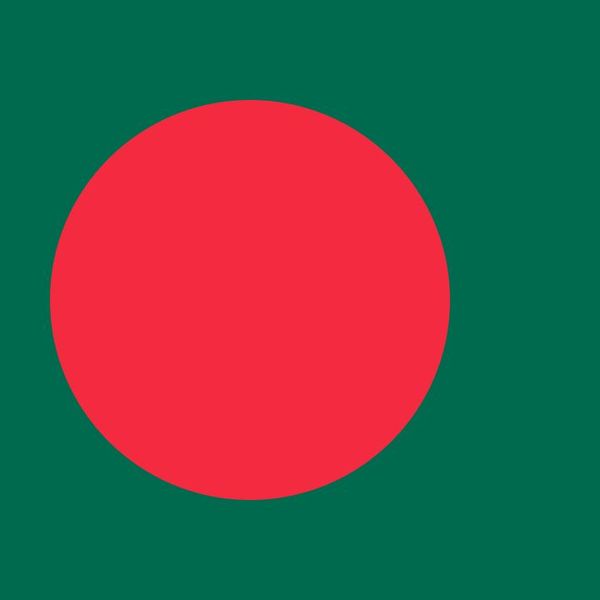An evolution of an individual stems from the root of one’s culture and history, in which it provides a sense of direction and identity. This identity can make an individual feel grounded in their roots with a historic or cultural connection. In many places around the world, a sport or game can be that historic attribute that subsidizes one’s individuality. In this case, I will take the reader on a journey through Bangladesh, mainly focusing on and exploring their popular sport: cricket.
The purpose of this paper was to give an insight into the history of Bangladesh, as well as an overview of the rules and organization of cricket. I will then present the sociocultural influences connected to the sport which will give an in-depth understanding of why the culture is the way it is today. Finally, this paper will analyze the personal relationship I have to the cultural background of cricket. The goal of this critical autobiographical cultural sports narrative paper is to illustrate cricket and demonstrate its ties within the nation of Bangladesh.
National History/Overview of Bangladesh
Bangladesh, also better known as a country considered to be the heart of poverty. Gaining its independence in 1971 when East Pakistan parted from its union with West Pakistan. This independence would soon be the start of an ever-growing nation. Dhaka, as the country’s capital; is the largest city in the country. The vast majority of the country’s population is consumed in this city itself. The traffic, pollution and congested streets are what make it the busiest yet most popular city. Outside of the main city, when it comes to poverty; it is not much different than Dhaka. It is one of the countries with the extreme burden of inhibiting globally, about 2.2 million of the population resides in slum areas under dreadful vulnerable circumstances (Sanin et al, 2018). A country as small as the state of Iowa housing a whopping total of over 164 million people (Nationonline, 2018). Despite its size, Bangladesh has been known for their vast agriculture and the garments sector. Matter of fact, their garments sector is most popular for employing women. An aspect that contradicts the cultural norm, which has been proven to be otherwise. Nonetheless, this factor has been the backbone of Bangladesh’s industrial segment which accounts for more than 80% of overall exports and exceeds $25 billion (Nationonline, 2018). The common agricultural resources include three major crops such as: rice, jute (also known as golden fiber) and tea. Rice is mostly common for local consumption whereas jute and tea are their foremost export breadwinners. Due to this essential sector in Bangladesh’s economy, it contributes to employment for more than half of the public. In spite of Bangladesh’s developing aspect, this country has not always been an advancing nation. In fact, the majority of the country are still categorized under the poverty umbrella. Even living situations are considered luxury if one lives in something much better than a mud hut, “they had a level of physical assets (a mud hut and micro homestead) that millions of Bangladeshi’s can only dream about” (Hulme, 2004). This shows that living in anything else other than a mud hut was a privilege and something Bangladeshi’s dreamt about, even though this may have been the custom for many. It is clear that the economy in Bangladesh mainly have two classes, one is the rich and the other is the poor. It is almost as if the middle class does not exist, and if so; very minimally.
However, regardless of the economic classes between rich and poor; the cultural values in Bangladesh remain the same for everyone. These cultural values include: hard work, honor, respect, family and religion. Though exploitation may be predominant throughout Bangladesh, it is very common for one’s social status to be associated with their affluence, level of education and family’s reputation. In Bangladesh, family bonds are prioritized above all. It is tradition for the oldest male to look after the family after the father. Irrespective of the male’s status, it is expected he goes above and beyond to fulfill the responsibilities that his father once had, or even if the father is alive, he is expected to take after the father once he has passed. In the Bengali community, it also very common for the oldest sibling, whether it be a male or female; to end up being the support system for a lifetime. Their responsibilities include looking after the younger siblings and the parents as they get old. The oldest sibling is meant to be a model and set examples for the others to follow. It is a cultural aspect to take care of the parents even if they are fully capable of taking care of themselves. That is where respect and religion come into play. It is a child’s duty to now be responsible for their parents, as the parents once were for the children. Along with the responsibilities being passed on, one is also expected to follow the religion one was raised in. The main religion of Bangladesh is overwhelmingly Islam. The call to prayer is echoed across speakers from city to city, depicting how important religion is to those who reside in Bangladesh. This is a way to bring all those together, whether elite or low-class, this was a way to bring the nation together as one. This is meant to show equality, the rich and the poor stand shoulder to shoulder, side by side during prayer: here no one is better than the other. This is a great representation how the sport cricket is portrayed in Bangladesh.

